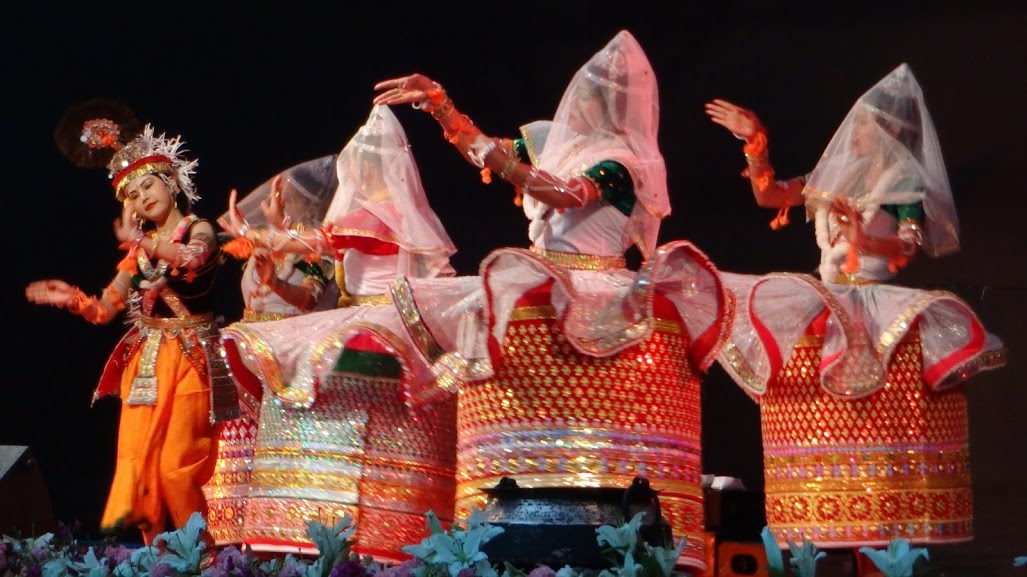4).Manipuri

Manipuri dance is one of the major Indian classical dance forms. It originates from Manipur, a state in north-eastern India on the border with Burma. The cult of Radha and Krishna, particularly the raslila, is central to its themes but the dances, unusually, incorporate the characteristic a percussion instrument and double-headed drum of sankirtan into the visual performance. Manipuri dance is purely religious and its aim is a spiritual experience.[4] Development of music and dance has through religious festivals and daily activities of the Manipuri people. According to the legend, the indigenous people of the Manipur valley were the dance-expert Gandharvas mentioned in the Hindu epics like Ramayana and Mahabharata. Not only is dance a medium of worship and enjoyment, a door to the divine, but indispensable for all socio-cultural ceremonies. From the religious point of view and from the artistic angle of vision, Manipuri classical form of dance is claimed not only to be one of the most chastest, modest, softest and mildest but the most meaningful dances of the world. The most striking part of Manipur dance is its colorful decoration, lightness of dancing foot, delicacy of abhinaya (drama), lilting music and poetic charm.
The style

The traditional Manipuri
dance style embodies delicate, lyrical and graceful movements. The aim is to
make rounded movements and avoid any jerks, sharp edges or straight lines. It
is this which gives Manipuri dance its undulating and soft appearance. The foot
movements are viewed as part of a composite movement of the whole body. The
dancer puts his or her feet down, even during vigorous steps, with the balls of
the feet touching the ground first. The ankle and knee joints are effectively
used as shock absorbers. The dancer’s feet are neither put down nor lifted.
No comments:
Post a Comment